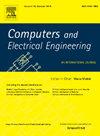基于混合 PCA-DWT 信号处理技术的 VSC-HVDC 系统 ANFIS 智能故障检测、分类和定位模型
IF 4
3区 计算机科学
Q1 COMPUTER SCIENCE, HARDWARE & ARCHITECTURE
引用次数: 0
摘要
从保护角度来看,设计一个准确的故障检测、分类和定位模型至关重要。自适应神经模糊推理系统(ANFIS)是一种常用的基于学习的故障定位模型,其性能不受传播波特性的影响,可通过优化与输入相关的成员函数来提高其性能。因此,本文采用了两种具有群体空间快速搜索能力的元启发式算法,即哈里斯-霍克斯优化算法(HHO)和布谷鸟搜索优化算法(CS)来优化 ANFIS,并将其性能与传统 ANFIS 训练算法进行了比较。此外,本文还采用主成分分析(PCA)来检测故障,并利用离散小波变换(DWT)策略,根据 PCA 得到的统计量 T2 获取 ANFIS 训练和测试数据集。根据从当前信号中提取的小波系数,计算出与之相对应的三个统计指标,即平均值、标准偏差和规范熵,并将其应用于 ANFIS 的训练和测试。优化后的 ANFIS 执行故障分类和定位任务,并将所提模型的准确性与常用的基于行波(TW)的模型和近期文献中提出的故障定位方法进行比较。研究了直流链路上的三种故障类型和三种故障电阻,以证实所提模型的故障分类优势及其与故障类型/阻抗无关的估计能力。故障定位任务的准确率为 99.995%,而故障检测和分类的准确率为 100%。仿真和数值研究在 MATLAB 软件中进行。本文章由计算机程序翻译,如有差异,请以英文原文为准。
An intelligent ANFIS-based fault detection, classification, and location model for VSC-HVDC systems based on hybrid PCA-DWT signal processing technique
Designing an accurate model for fault detection, classification, and location is vital from the protection viewpoint. The adaptive neuro-fuzzy inference system (ANFIS) is a commonly used learning-based fault location model that performs independently from the propagating wave characteristics, whose performance can be improved by optimizing the membership functions associated with the inputs. Accordingly, two metaheuristic algorithms with the quick-search capability of the population space, i.e., Harris Hawks optimization (HHO) and cuckoo search (CS) optimization algorithms, are used in this paper to optimize the ANFIS, and their performances are compared with the traditional ANFIS training algorithms. Moreover, principal component analysis (PCA) is employed to detect the fault, and the discrete wavelet transform (DWT) strategy is exploited to acquire the ANFIS training and testing dataset according to the statistics T2 obtained by PCA. Three statistical indices, i.e., mean value, standard deviation, and norm entropy, are computed corresponding to the extracted wavelet coefficients from the current signal and applied to train and test the ANFIS. Optimized ANFIS conducts fault classification and location tasks, and the accuracy of the proposed model is compared with the commonly used traveling wave (TW) –based models and recently proposed fault location methods in the literature. Three fault types on the DC-link with three fault resistances are examined to confirm the fault classification superiority of the proposed model and its fault type/impedance-independent estimation capability. An accuracy rate of 99.995% is obtained for the fault locating task, while fault detecting and classifying are accomplished with an accuracy of 100%. Simulations and numerical studies are performed in MATLAB software.
求助全文
通过发布文献求助,成功后即可免费获取论文全文。
去求助
来源期刊

Computers & Electrical Engineering
工程技术-工程:电子与电气
CiteScore
9.20
自引率
7.00%
发文量
661
审稿时长
47 days
期刊介绍:
The impact of computers has nowhere been more revolutionary than in electrical engineering. The design, analysis, and operation of electrical and electronic systems are now dominated by computers, a transformation that has been motivated by the natural ease of interface between computers and electrical systems, and the promise of spectacular improvements in speed and efficiency.
Published since 1973, Computers & Electrical Engineering provides rapid publication of topical research into the integration of computer technology and computational techniques with electrical and electronic systems. The journal publishes papers featuring novel implementations of computers and computational techniques in areas like signal and image processing, high-performance computing, parallel processing, and communications. Special attention will be paid to papers describing innovative architectures, algorithms, and software tools.
 求助内容:
求助内容: 应助结果提醒方式:
应助结果提醒方式:


